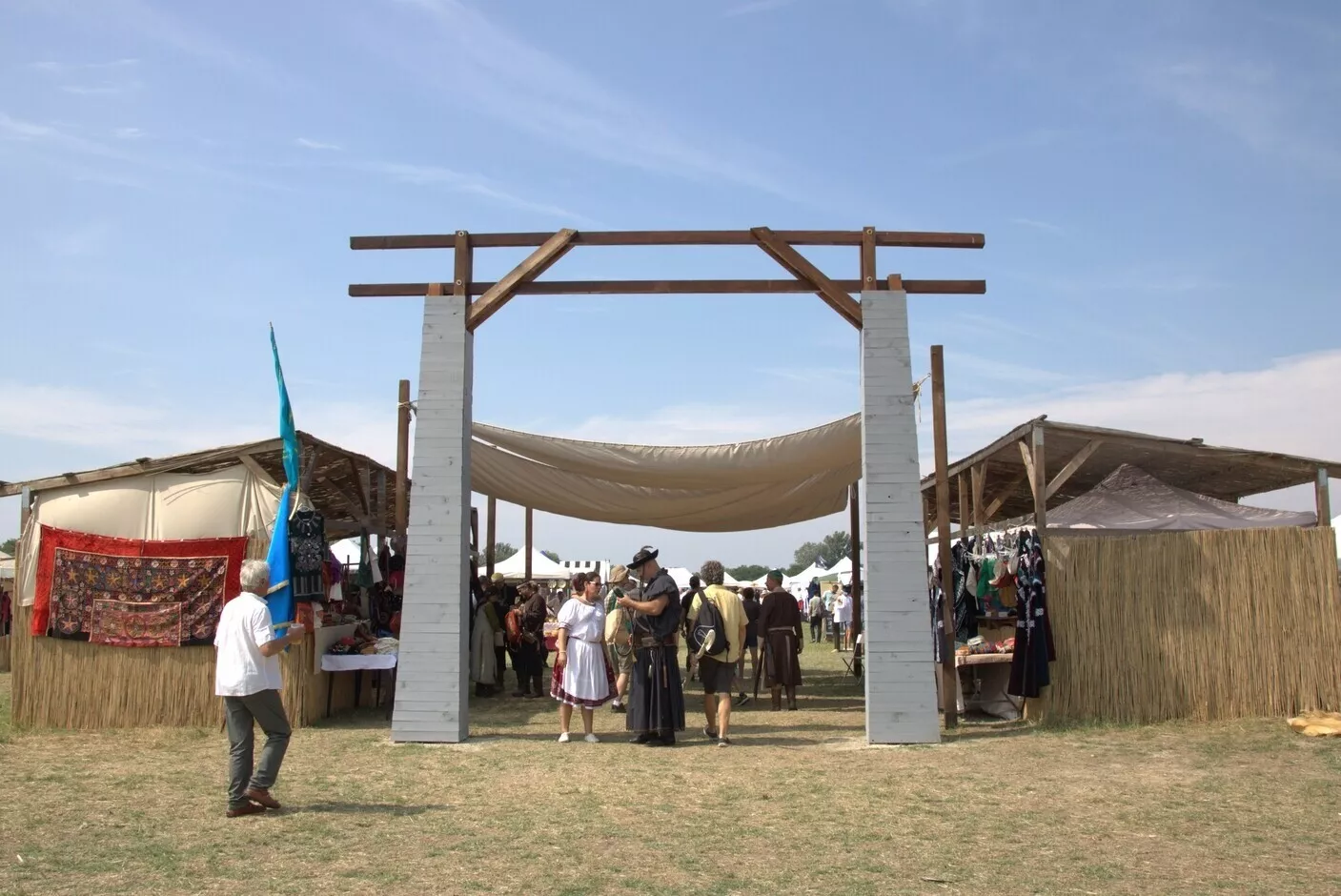PHOTOS: Ancestors’ Day with C Asian participants, nomadic parade, exhibitions in Bugac

We were at the seventh edition of Ancestors’ Day. The event, based on the traditions of the steppe peoples, has grown over the years. Near Bugac, basically, a small town is forming around the Ancestors’ Day, with the atmosphere of a fairground with crafts, pony rides, and other fun activities. What is different, however, is the vision that the emotive voice of the announcer told the audience during the nomadic procession: Zsolt András Bíró and the Hungarian Turan Foundation had dreamed of this event years ago, and it has now grown to the size they once imagined it to be.
An international crowd
Perhaps a good representation of the size of the event is that I was on the bus to Bugac with a Kazakh and an Iranian participant, helping them find their way around after the Sunshine IC to Szeged was delayed for an hour on Saturday. But even then, the atmosphere was extremely friendly, with more experienced visitors helping first-time attendees. The international character of the event was well-demonstrated by the many languages that were spoken. From English to German to Asian languages, we also witnessed a French traditionalist volunteer for the sporting contest. The presence of the Asian contingent was most striking, and they came from all corners of the continent, from young girls with cameras to lads in elegant shirts to men in suits.
Before the official opening, a huge queue had already formed in front of Attila’s tent, where an exhibition on the domestication of horses was on display. But the arena was already packed when the blessing ceremony with the falconry took place in the morning. Other venues of the Ancestors’ Day were a little less frequented in the morning but filled up quickly during the day. The crowd remained manageable throughout the event. So, if anyone was worried about the large throng of visitors should feel at ease to attend next time. Although the food tents were often crammed, large areas of the event remained quite breezy. Only shaded areas were lacking a little in the mid-morning heat, but the shade provided by the set-up canopies eased the discomfort.
The logistics of the venue worked swimmingly, at least on Saturday. A host of bags were placed out to dispose the garbage. But the organisers also repeatedly asked participants not to litter. This was successful, as the amount of rubbish on the ground was barely noticeable inside the Ancestors’ Day area, and during the day the waste was constantly being removed. The mobile toilets were also sufficiently numerous and frequently emptied to serve the needs of thousands of people. These may seem like small things, but they can spoil the atmosphere of such an event if not maintained properly.
Read also:
- PHOTOS: Greatest Hungarian king’s earthly remains to be uncovered due to outstanding discovery!
- Canadian family found 1,100-year-old Hungarian ancestor with unique Asian gene
Nomadic parade
The event that attracted the most attention and number of spectators took place in the arena. The most anticipated event was the nomadic march when various traditionalist troops marched together into the arena in nomadic marching order. The horsemen came first, followed by the footmen and the charioteers.
The ensuing parade was also spectacular, with the riders again taking their turn, but this time in formation and turning around at the appropriate points in the arena. This was followed by the welcome speeches of András Zsolt Bíró joined by the Mayor of Bugac and the Secretary of State of the Ministry of Culture and Innovation, which supported the event.
The arena then became the scene of various fighting demonstrations and competitions. Perhaps the most spectacular of these was the sport of Köböre, which is still practised as a sport among the steppe peoples of Kazakhstan. Here, two teams of horsemen attempted to drive a goat into a designated circle. The winner was the one who managed to do this tricky task the most number of times within the time limit. Originally played with a live animal, a 30 kg stuffed puppet replaced the goat at the event.
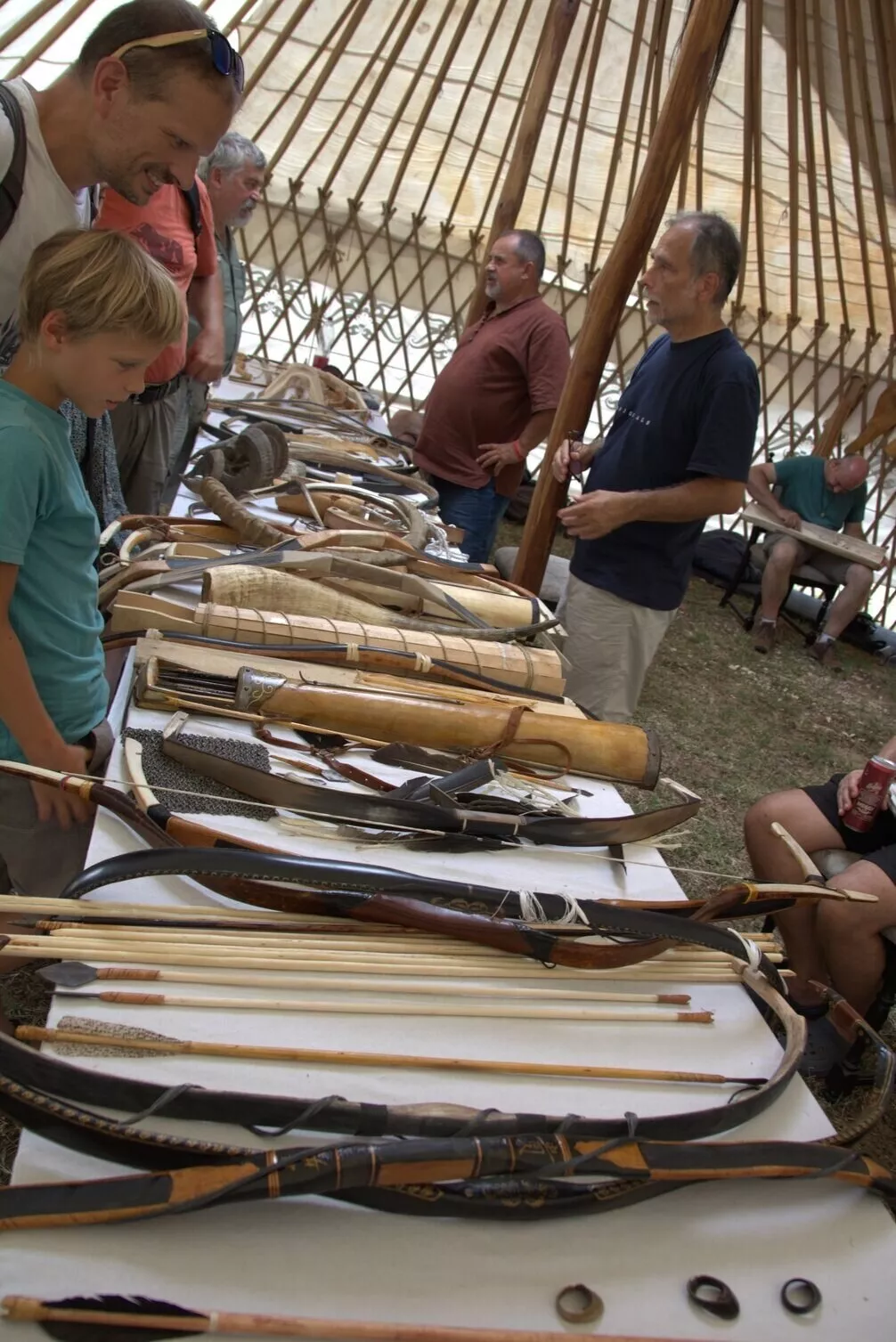
Ancestor’s Day exhibitions and performances
Ancestor’s Day has set up a number of themed yurts. The largest of these was Attila’s Tent, in front of which long lines of people queued. Inside, there was an exhibition about the history of horse domestication. Not far from it, the public could see reconstructions of the faces of buried Hungarian conquerors. You could also take a look at the yurts of several traditional groups, and at the Hungarian Historical Archery Society, you could try out bows reconstructed from archaeological findings.
The lecture tent was almost full on Saturday, with some people even watching from the sides of the tent. Gergely Agócs gave a lecture on the folk music of related peoples while Ágota Madai on the historical epidemiology and historical pathology of leprosy and tuberculosis. The morning session was closed by Endre Neparáczki from the Institute for Hungarian Studies, who presented his archaeogenetic research of the past years, stressing that he didn’t wish to comment on linguistic affinities as an archaeogeneticist.
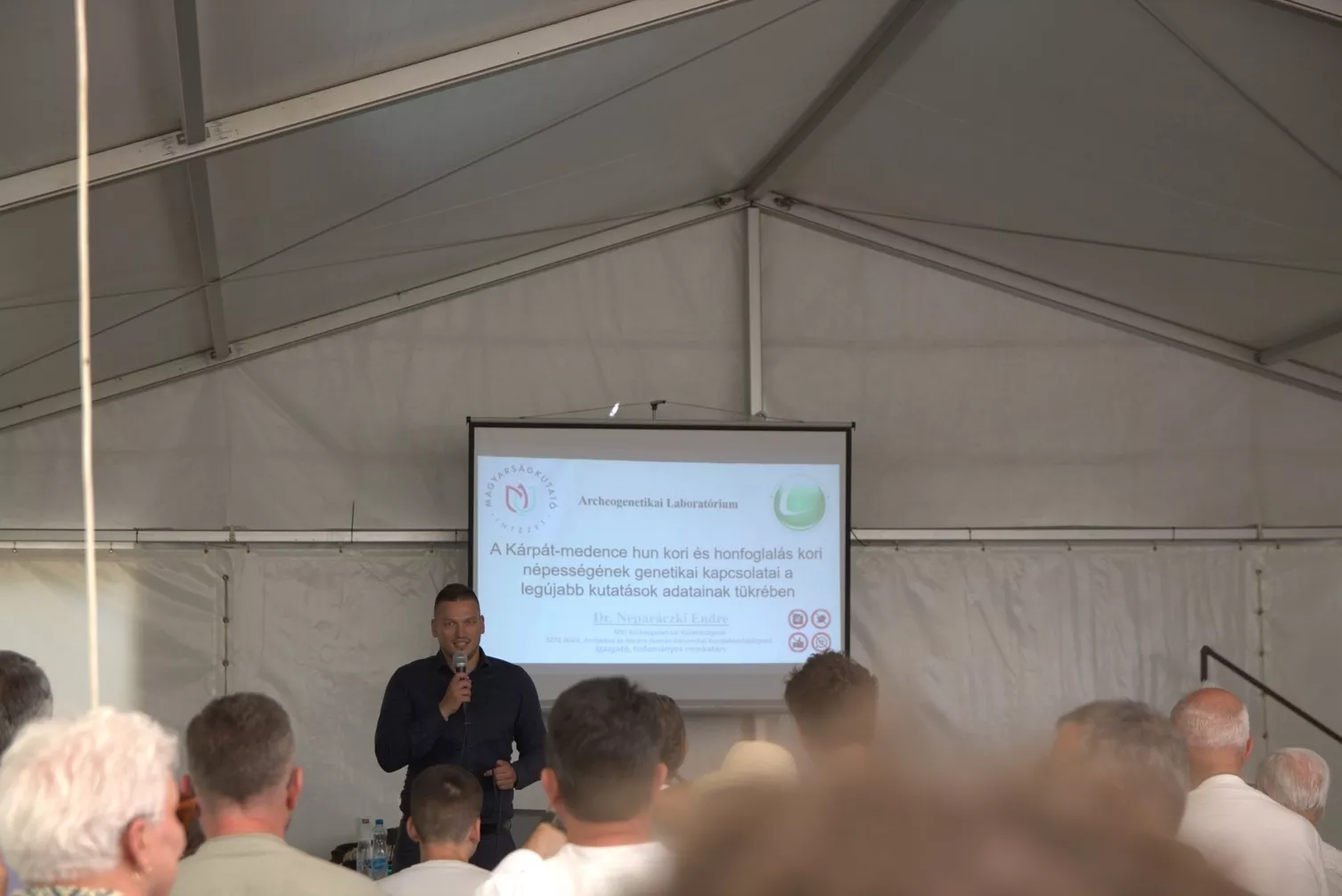
The lectures continued in the afternoon, with presentations by Norbert Gőgös of the Hungarian Geographical Society, and Boldizsár Csornay and György Szabados of the Hungarian Studies Institute. In his presentation, the latter analysed the details of medieval Hungarian sources describing the relationship between Huns and Hungarians.
Ancestor’s Day and modern challenges
Ancestor’s Day, of course, also faces the same challenges as most other similar festivals based on tradition. As the event becomes more popular, it is bound to attract visitors who come for the spectacle and the community atmosphere rather than the spirit of the event. A good example of this is that during the blessing of the arena with the falcon flight — an event that was probably considered important by the organisers — the announcer specifically asked the spectators to be respectful of the ceremony. But still, several phones were raised to capture the moment. In the future, it would be worthwhile to better emphasise respect for sacred moments.
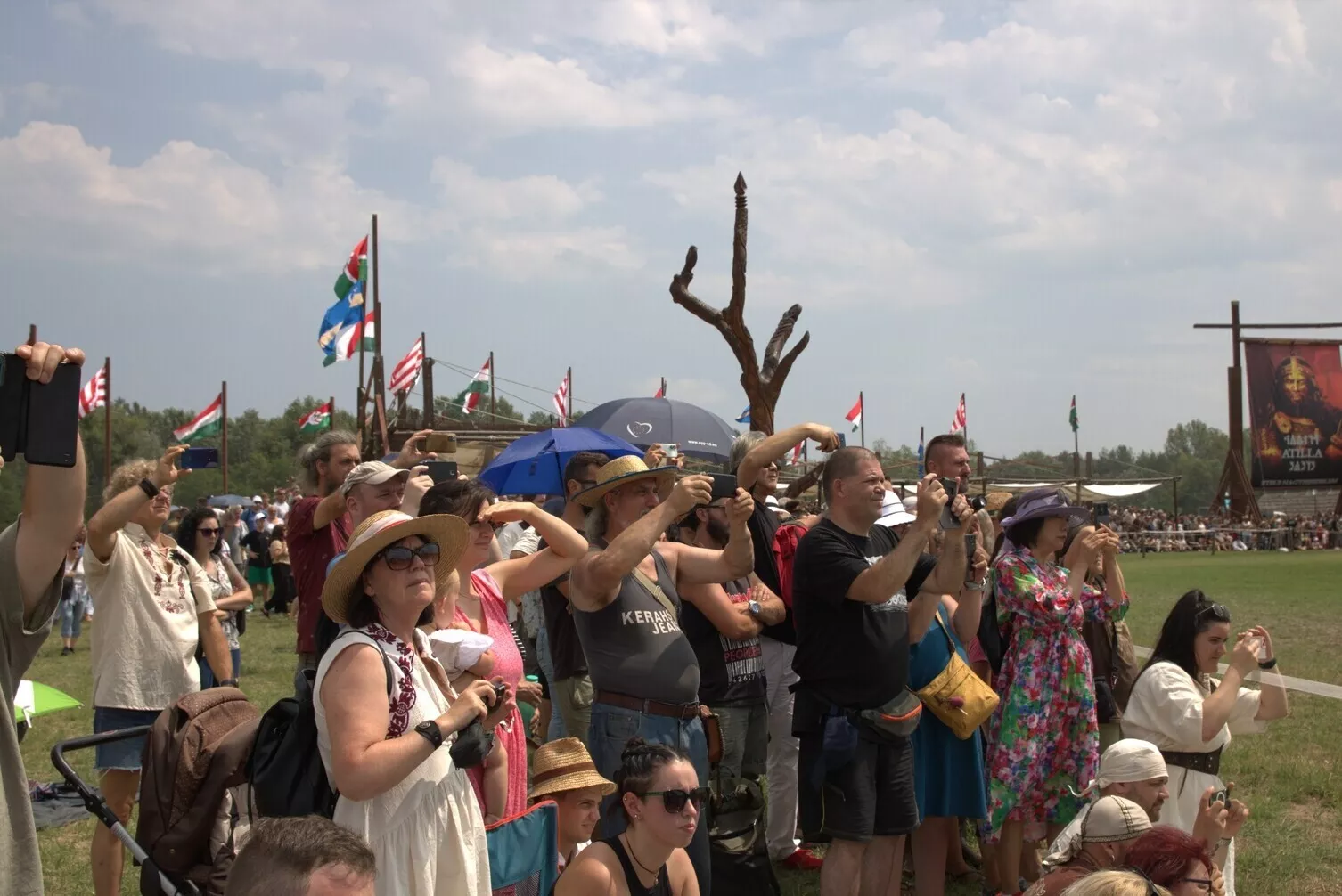
Another sign of commercialisation is that in addition to the traditional programmes, the main attraction for the crowds was the fairground. Food prices were in line with those in Budapest and that of other festivals. The Ancestors’ Day, according to the “lángos index”, which appeared a lot in the press recently, was very popular: plain lángos was available at all food booths for HUF 1,000 (about EUR 2,5). However, as soon as you asked for additional topping, the price quickly shot up to as high as even HUF 2,500 (about EUR 6) in some cases. The drastic prices could be major turn offs for families in the future. Although entry is free, tens of thousands of forints can be lost in the Bermuda Triangle of parking and dining.
In addition, public transport operators do not seem to be very keen to support Ancestors’ Day. Even before the accident, the MÁV train to Szeged was so late that anyone trying to catch the 8:30 AM bus to Bugac was out of luck. The situation is similar with Volán service: participants without a car had to leave before 5:26 PM to hop on the last bus. Even though, even in the evening hours there were some fascinating events (e.g. the sports finals). It is incomprehensible why it is not possible to condense the timetable with a single service at this time. And the returning Volán bus was filled to the brim. Perhaps the next step for Ancestors’ Day to improve visitor experience should be to become independent of the public transport operators.
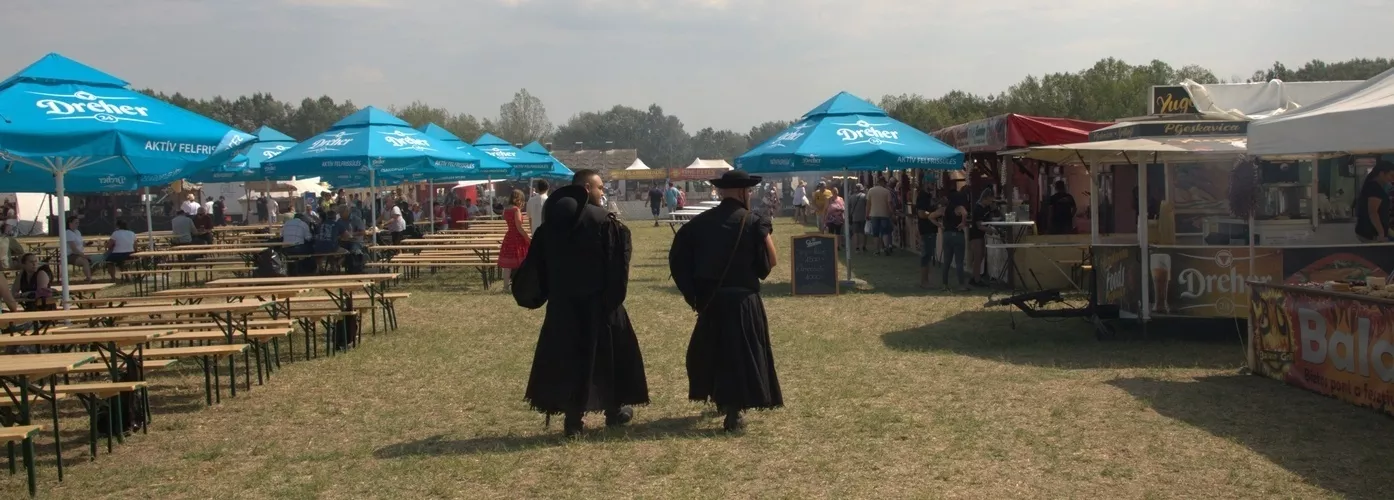
The goods of the handicraft vendors also tended to follow the typical festival pricing scheme. Of course, tradition-keeping can be an expensive hobby. A 60,000 HUF (EUR 156.35) ringed whip or a 40,000 HUF (EUR 104.23) shaman drum can be seen as a quality product made with care, but obviously, this cannot be said for all goods. It wouldn’t be a bad idea, for example, if reliable and quality products, especially those that are authentic, were given some kind of certificate by the organisers of the Ancestors’ Day that proves they are good value for money.
But these dilemmas are not insurmountable. The Ancestors’ Day has achieved the status of being one of the most unique Hungarian festivals worth visiting at least once.
The original article is available at our partner site, Hello Magyar HERE.
Source:






